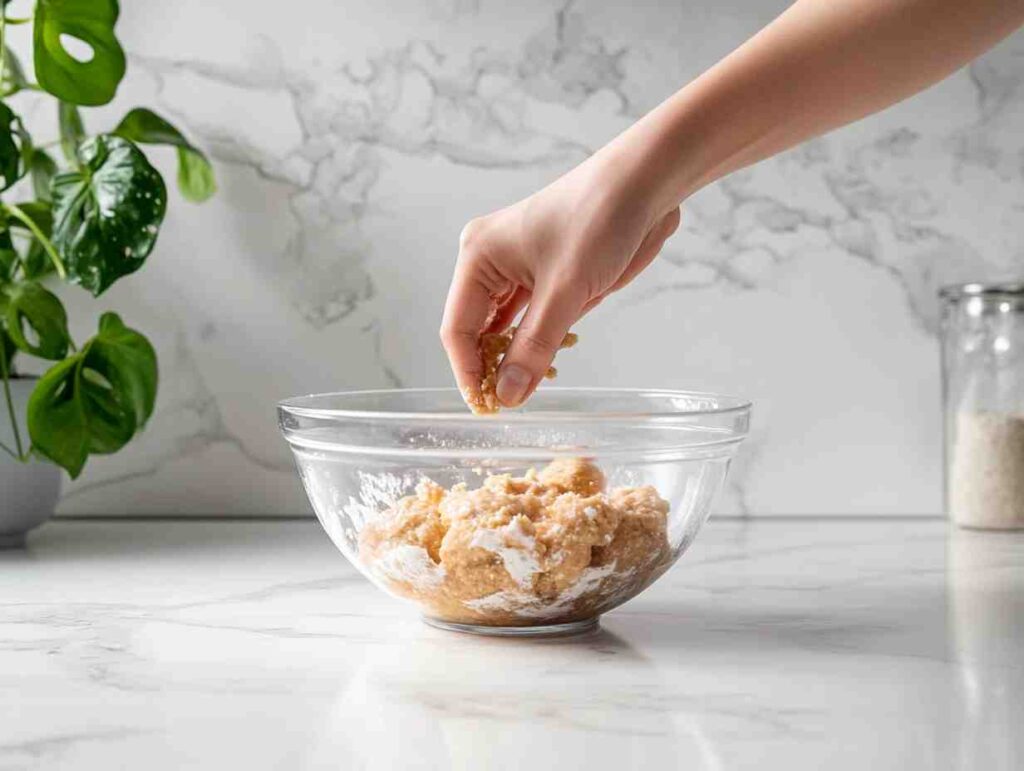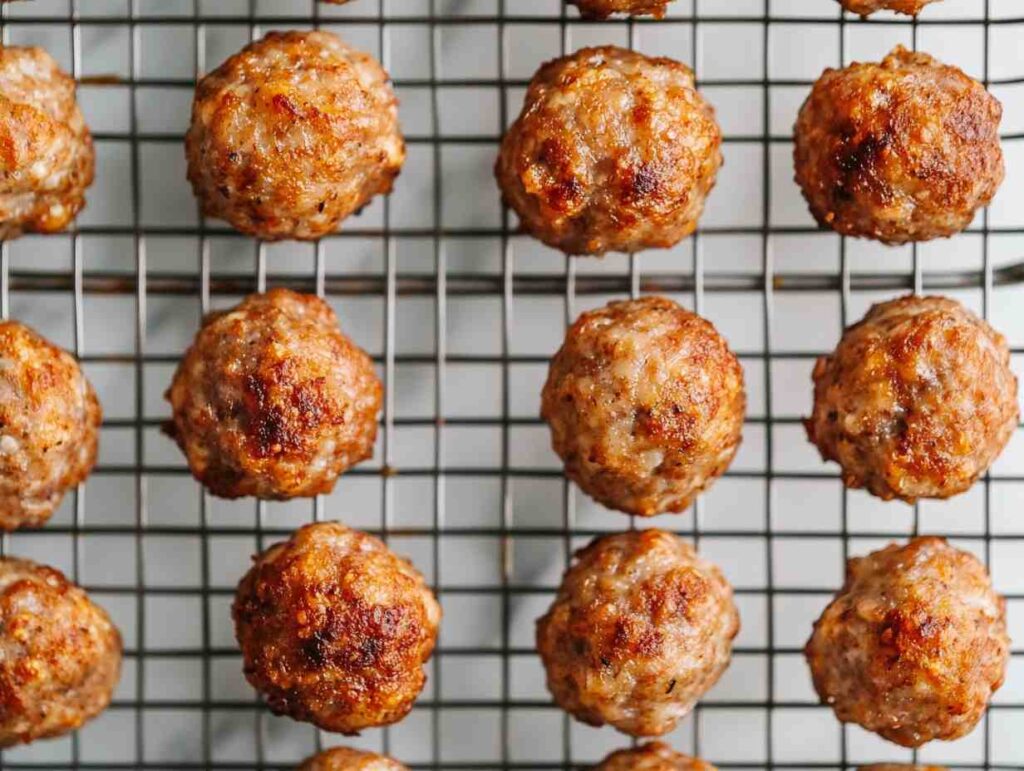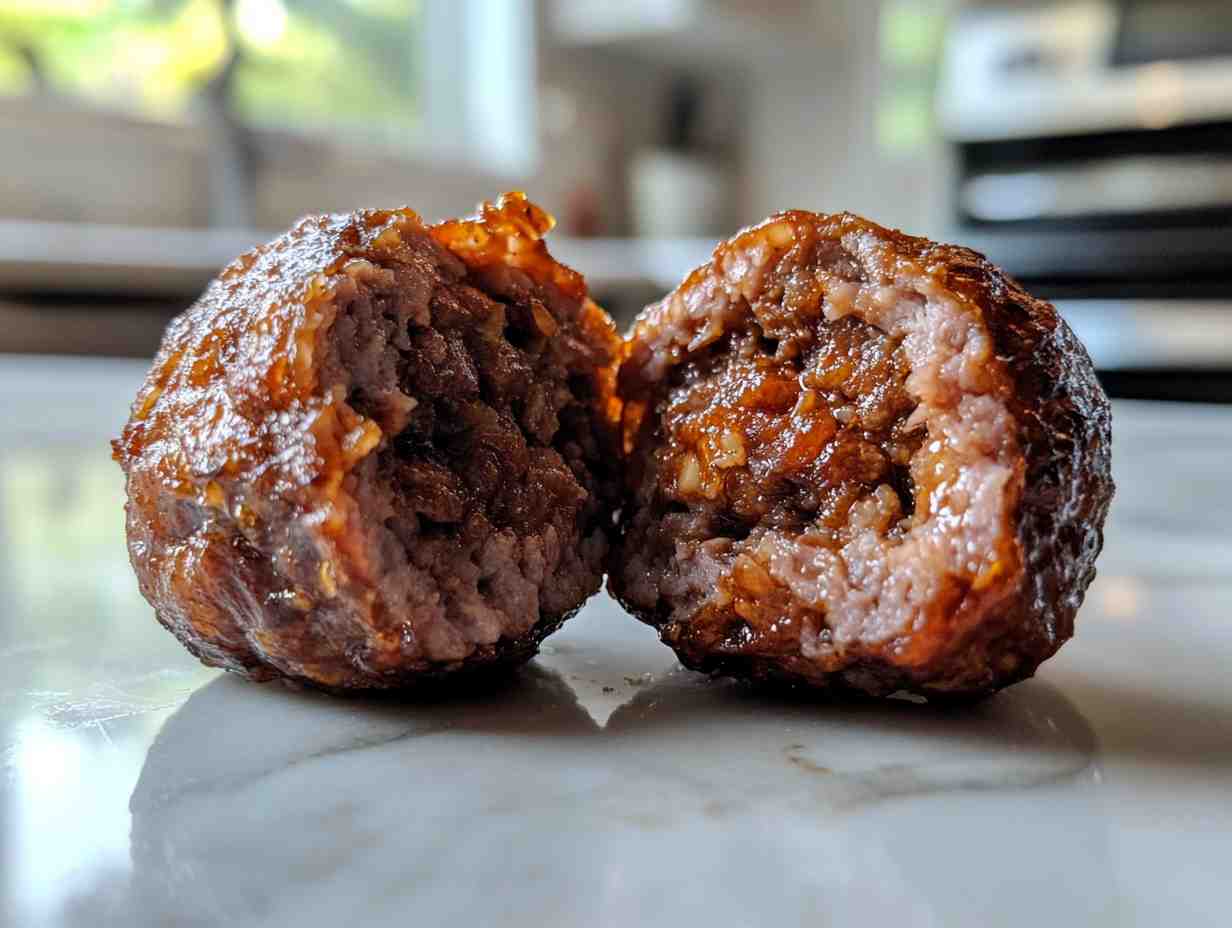Have you ever made sausage balls only to find they’re disappointingly dry? This is a common issue, but luckily, it’s usually easily fixable. Therefore, let’s explore the reasons why are my sausage balls so dry and learn how to make them perfectly moist every time. This guide will help you understand the common mistakes and how to avoid them. We’ll ensure your sausage balls are a hit.
Understanding the Common Causes of Dry Sausage Balls
Many factors can contribute to dry sausage balls. First, overmixing the dough is a common culprit. When you overmix, you develop the gluten. This leads to a tough, dry texture. Secondly, using too much baking mix is a major cause. Too much dry mix can absorb moisture. This causes the sausage balls to become dry and crumbly. Thirdly, not using enough fat is another reason. Fat helps keep the sausage balls moist and tender.
In addition to the above, using lean sausage is a common mistake. Lean sausage has less fat. This can lead to dryness, especially if no other fat is added to the mix. Furthermore, baking at too high a temperature will cause them to dry quickly. In conclusion, understanding these basic reasons will help you make delicious sausage balls every time. We will explore solutions for each of these issues.
The Role of Ingredients in Moisture Content of Sausage Balls
The type and quality of your ingredients directly affect the moisture level of sausage balls. For example, using full-fat cream cheese is very important. Reduced-fat versions won’t add enough moisture. Also, the amount of moisture in your sausage matters. Some brands have more moisture than others. Additionally, the type of baking mix used can be crucial. Some absorb more moisture than others.
Moreover, the temperature of the ingredients is also a factor. Softened cream cheese mixes better. This creates a smoother batter. Therefore, room temperature eggs are also helpful. Always ensure all your ingredients are fresh. In short, paying attention to these details will help ensure moist and delicious sausage balls.
Overmixing and Its Impact on Sausage Ball Texture

Overmixing the sausage ball dough can be one of the main causes of dryness. When you overmix, the gluten in the baking mix develops. This results in a tougher, denser texture. Therefore, it’s essential to mix just until the ingredients are combined. Avoid any vigorous or prolonged mixing. The goal is to keep the mixture light. You can use a spoon or your hands to gently mix everything together.
Moreover, be very gentle at the stage of forming the sausage balls. Overworking the dough at this stage can also lead to a dry, dense texture. Try to form the balls quickly and gently. In conclusion, avoiding overmixing is crucial for achieving tender and moist sausage balls. It’s a key step in the entire recipe.
Correcting Sausage Ball Dryness: Solutions and Tips

Now that we understand the causes, let’s focus on solutions. First, use the correct ratio of ingredients. Specifically, ensure you have enough fat. Adding a bit of melted butter or oil to the mixture can help. Second, always use softened cream cheese. This will ensure the batter is smooth. Also, it will help prevent pockets of dry ingredients.
In addition to fat, add more moisture. If you suspect that the mix is dry, add a tablespoon of milk. This can add the missing moisture. Also, always use full-fat ingredients, and don’t overmix. These strategies will help you avoid dry sausage balls. Adjust the recipe if needed to ensure a perfect result.
Adjusting the Baking Process to Prevent Dry Sausage Balls
The baking process can also impact the moisture level of your sausage balls. First, make sure your oven is at the correct temperature. Baking at too high a temperature will cause the sausage balls to dry out quickly. Second, don’t overbake them. They’re done when they’re lightly golden. Use a timer and check them often.
In addition, consider placing a small dish of water in the oven while baking. This adds moisture to the oven. It helps prevent the sausage balls from drying out. Finally, always let the sausage balls cool on a wire rack. This prevents them from getting soggy on the bottom.
Adding Moisture Back to Dry Sausage Balls
If you’ve already baked your sausage balls and they’re dry, don’t despair. There are a few ways to add moisture back. First, you can lightly brush them with melted butter. This can make them more palatable. Second, you can steam them for a few minutes. Simply place them in a steamer basket over boiling water.
Another option is to reheat them in a covered dish. Add a splash of water or broth. This will help to create a moist environment. In conclusion, these methods can help to salvage dry sausage balls. However, prevention is always better.
Perfecting Your Sausage Ball Recipe for Moist Results
To ensure moist sausage balls every time, it’s important to fine-tune your recipe. First, start with good quality ingredients. Second, make sure the ratio of ingredients is correct. Specifically, ensure you have enough fat and moisture. Third, do not overmix the dough. Mix until just combined. Be gentle when forming the sausage balls.
Furthermore, monitor your oven temperature carefully. Don’t overbake them. Test them often. Adjust baking time according to your oven. Finally, experiment with adding small amounts of extra fat or moisture to your recipe. This can help you find the perfect balance for moist sausage balls. Therefore, perfecting your sausage ball recipe is key.
Experimenting with Different Types of Sausage for Added Moisture
The type of sausage you use significantly impacts the moisture of your sausage balls. Using fattier sausage can help. Consider using a mix of breakfast sausage and Italian sausage. Also, you can try using chorizo. This adds flavor and moisture. In addition, always check the fat content of the sausage you buy. Some brands have more fat than others.
Furthermore, you can also add a small amount of rendered fat, such as bacon grease. Adding this to the mixture can enhance the flavor and moisture. Try a mix of different types of sausages to find your favorite texture. Therefore, exploring different sausage options can be a game changer.
The Importance of Full-Fat Ingredients in Sausage Ball Recipes
Using full-fat ingredients is crucial for keeping your sausage balls moist. Always choose full-fat cream cheese. Reduced-fat versions will not provide enough moisture. Also, full-fat sour cream or even mayonnaise can enhance the texture. These ingredients not only add moisture but also improve the overall flavor.
Moreover, using full-fat milk rather than skim milk will help retain moisture. If a recipe calls for butter, don’t substitute with a low-fat version. Every ingredient plays a role in the overall moisture content. Thus, choosing the right kind of fat is very important for moist sausage balls.
Preventing Dryness: Essential Steps for Moist Sausage Balls
To sum up, preventing dryness in your sausage balls requires attention to detail. First, avoid overmixing the dough. Second, use the correct ratio of wet and dry ingredients. Third, ensure you have enough fat. Fourth, use softened cream cheese and room temperature eggs. Fifth, don’t overbake. Use the correct oven temperature. Lastly, check often.
Moreover, consider adding extra moisture if needed. Small amounts of milk or melted butter can make a difference. Let them cool on a wire rack. Always adjust your recipe to suit your preferences. In short, these steps are essential for keeping your sausage balls moist and delicious. Therefore, following these tips will bring you success.
Tips for Storing Sausage Balls to Maintain Moisture
Storing sausage balls properly is important to keep them from drying out. If you plan to serve them soon, keep them in an airtight container. Place a piece of bread in the container to absorb moisture. If storing in the fridge, use an airtight container with a tight-fitting lid. Avoid leaving them out at room temperature.
For longer storage, you can also freeze them. Make sure they are completely cooled. Then, place them in a freezer-safe bag or container. When reheating, consider adding a splash of water or broth. This will help maintain their moistness. Therefore, proper storage is key to enjoying them later.
Troubleshooting Common Sausage Ball Issues
Sometimes even when you follow all the steps, your sausage balls still might not turn out perfect. If they’re too dense, you likely overmixed the dough. If they’re too crumbly, you may have used too much baking mix. If they’re not holding their shape, you may need more binding ingredients. If they’re bland, you may need to add more seasoning.
Therefore, always keep notes on your recipes. Pay attention to the changes you make. This will help you identify and fix common issues. Remember that practice makes perfect. So, don’t be afraid to experiment with your recipe to get it just right. These steps can bring you one step closer to the perfect sausage balls.
Nutritional Information for Sausage Balls
Understanding the nutritional information of your sausage balls is important. This table provides estimates for one serving of sausage balls (approximately 2-3 balls):
| Nutrient | Amount (Approximate) |
| Calories | 180-250 |
| Total Fat | 12-18g |
| Saturated Fat | 6-9g |
| Cholesterol | 40-60mg |
| Sodium | 300-400mg |
| Total Carbohydrates | 10-15g |
| Dietary Fiber | 0.5-1.5g |
| Sugars | 1-2g |
| Protein | 7-10g |
Please Note: These are estimates. The nutritional content will vary based on ingredients and portion size.
Healthier Alternatives for Sausage Balls
If you’re looking to make healthier sausage balls, there are options. Use leaner meat, such as turkey or chicken sausage. Substitute whole wheat baking mix for the regular one. This adds fiber. Use reduced-fat cream cheese or Greek yogurt. This can lower fat content. Add extra vegetables such as spinach or chopped peppers. These will add vitamins and nutrients.
Also, you could use less salt and more herbs for seasoning. These small adjustments can make a big difference. Making your sausage balls more healthy without sacrificing taste. Therefore, making healthier sausage balls is possible.
Why Understanding Dry Sausage Balls Is Crucial
Understanding why are my sausage balls so dry is essential for success. With the right knowledge and techniques, you can avoid these issues. Mastering your recipe will ensure moist, delicious sausage balls every time. It will also make you a better cook. Therefore, this knowledge is essential for any cook.
Moreover, preventing dryness will lead to more consistent results. This means that each time you make the recipe, you’ll get the perfect outcome. You can also feel more confident when making this recipe for parties or gatherings. Thus, having the proper techniques for moist sausage balls will make you a better cook.
Final Thoughts on Keeping Sausage Balls Moist
In conclusion, keeping sausage balls moist requires attention to several key factors. Start with quality ingredients, and make sure you have enough fat and moisture. Don’t overmix the dough. Use the proper baking temperature. Don’t overbake them. Store them properly. Finally, make adjustments to your recipe as needed. Therefore, with practice, you can consistently make perfect, moist sausage balls. Remember, it’s all about understanding the science behind the recipe.
Frequently Asked Questions (FAQs)
Why are my sausage balls so dry in the oven?
Dry sausage balls in the oven are often caused by several factors. First, the oven temperature might be too high. Second, the sausage balls might have been overbaked. Third, they might not have enough fat content. Baking at too high a temperature can cause them to dry out. Overbaking removes moisture. Furthermore, using lean sausage without adding extra fat contributes to dryness. Always use the recommended oven temperature and baking time.
Why are my sausages so dry?
Dry sausages can be caused by a few different issues. One of the most common reasons is overcooking. When sausages are overcooked, the fats and juices are lost. This results in a dry, tough texture. Another reason is the type of sausage used. Leaner sausages tend to be drier than fattier ones. Additionally, some sausages have less moisture to begin with. Always cook sausages until they are just cooked through. This prevents them from drying out. Also avoid puncturing them excessively during cooking.
How do you know when sausage balls are done?
Knowing when sausage balls are done is crucial for avoiding dryness. First, they should be lightly golden brown in color. Second, they should be firm to the touch. A good way to test if they’re cooked through is to cut one in half. The inside should be cooked through. There should be no visible pinkness. Furthermore, the juices should run clear.
How to keep sausage balls warm without drying them out?
Keeping sausage balls warm without drying them out can be challenging. However, it can be done with the right methods. First, use a slow cooker or a chafing dish set to low heat. Always add a little water or broth to the bottom of the container. This creates a moist environment. Another good option is to cover them with foil. This helps to trap moisture and prevent drying out. Never leave them in a hot oven for extended time. Check often and add moisture if needed.

